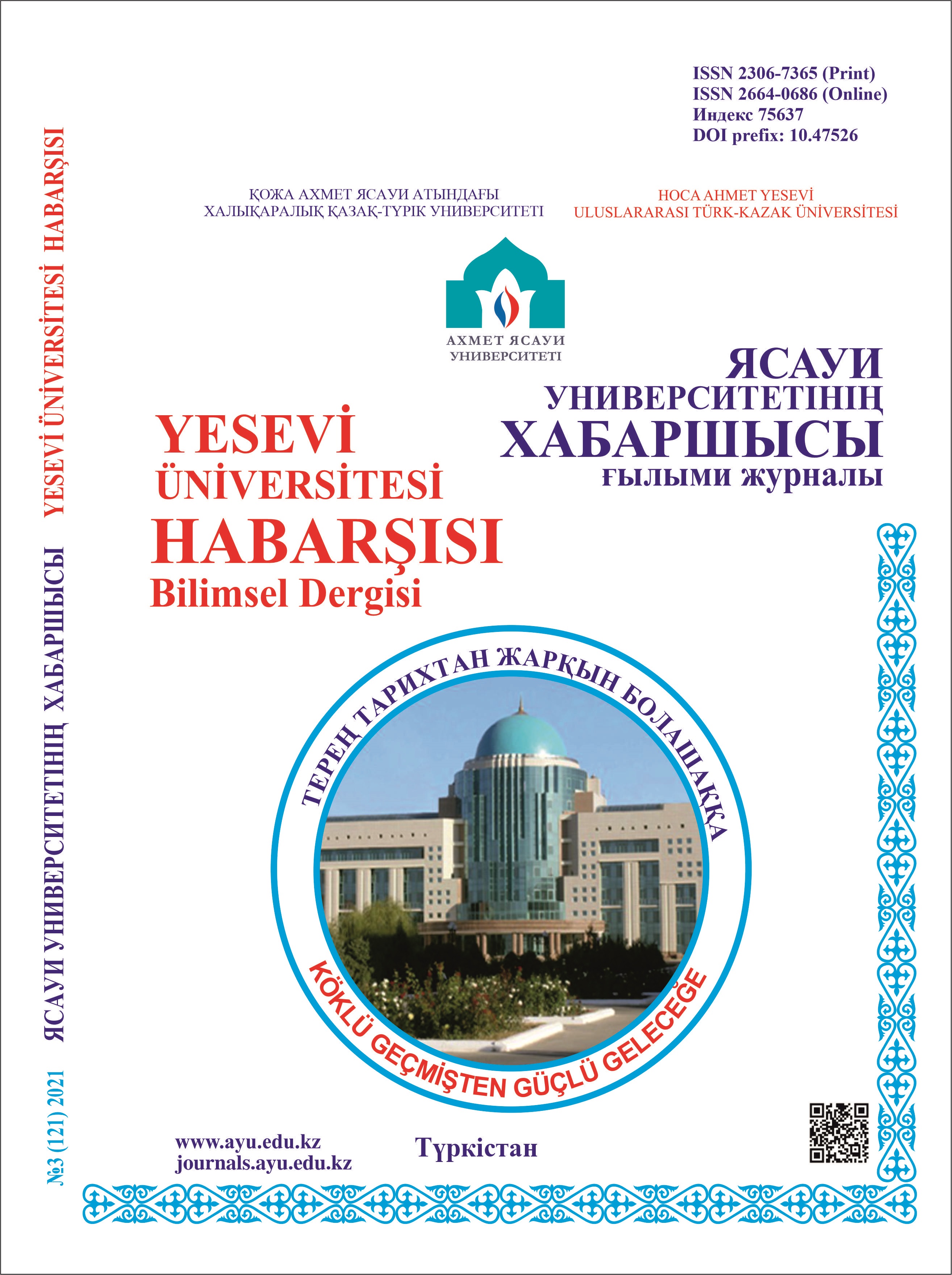THE ROLE OF GAMIFICATION IN LEARNING ENGLISH FOR TOURISM STUDENTS
158 83
Keywords:
multimedia tools, gamification, English, learning styles, mixed methods.Abstract
This study investigates the preferences and attitudes of first-year students in the Faculty of Tourism at the International University of Tourism and Hospitality in Turkestan towards the use of multimedia tools, particularly gamification, in learning English. The research tested the hypothesis that gender differences significantly influence multimedia preferences (H1) against the null hypothesis of no significant differences (H0).
Using mixed methods involving surveys and interviews, data were collected from 34 participants (16 males, 18 females). Inferential statistical analysis confirmed significant gender-based differences in multimedia preferences: males showed a stronger preference for video games (t = 2.45, p < 0.05), while females favored virtual tours and artistic content (t = -2.32, p < 0.05). Additionally, educational video games emerged as the most preferred tool (28% of students), with an overall satisfaction score of M = 4.88 (SD = 0.31).
The study highlights the effectiveness of gamification in enhancing engagement and language acquisition while emphasizing the need for tailored, inclusive strategies that accommodate diverse preferences. Practical applications include integrating gamified modules into tourism education to improve vocational readiness and align with Kazakhstan's trilingual education policy.
References
REFERENCES
Gholami R. Language Learning Style Preferences: A theoretical and empirical study language learning style preferences: a theoretical and empirical study // Advances in Asian Social Science (AASS). – 2014. – №2(2). – P. 441–451. 2. Díaz I.A., Zaja J.B. Gamification as a Multimedia Methodology Strategy in the English Language Teaching Process for EFL Learners // Education Annual Volume 2023. – IntechOpen, 2023. https://doi.org/10.5772/intechopen.109716 3. Ramaniya M.A. EFL Junior High school Students’ Learning Style // The Art of Teaching English as a Foreign Language. – 2021. – Т. 2. – №2. – P. 128–133. 4. Alqunayeer H.S., Zamir S. Identifying learning styles in EFL classroom // International Journal of Learning and Teaching. – 2015. – Т. 1. – №2. – P. 82–87. 5. Мейрбеков А.К., Керимбай Ж.М., Абрамова Г.И. Использование мультимодальных методов преподавания и видео ресурсов в процессе обучения английскому языку // Современные проблемы науки и образования. – 2021. – №5. – P. 10. https://doi.org/10.17513/spno.31091 6. Fleming N.D. Facts, fallacies and myths: VARK and learning preferences. [Electronic resource] https://www.vark-learn.com/wp-content/uploads/2014/08/Some-Facts-About-VARK.pdf (date of access 11.08.2024) 7. Pashler H. et al. Learning styles: Concepts and evidence // Psychological science in the public interest. – 2008. – Т. 9. – №3. – P. 105–119. 8. Gilakjani A.P. et al. Visual, auditory, kinaesthetic learning styles and their impacts on English language teaching // Journal of studies in education. – 2012. – Т. 2. – №1. – P. 104–113. 9. El-Bishouty M.M. et al. Use of Felder and Silverman learning style model for online course design // Educational Technology Research and Development. – 2019. – Т. 67. – №1. – P. 161–177. 10. Bhattacharyya E. et al. Learning style and its impact in higher education and human capital needs // Procedia-Social and Behavioral Sciences. – 2014. – Т. 123. – P. 485–494. 11. Prieto-Andreu J.M., Gómez-Escalonilla-Torrijos J.D., Said-Hung E. Gamificación, motivación y rendimiento en educación: Una revisión sistemática // Revista Electrónica Educare. – 2022. – Т. 26. – №1. – P. 251–273. 12. Jaramillo-Mediavilla L. et al. Impact of Gamification on Motivation and Academic Performance: A Systematic Review // Education Sciences. – 2024. – Т. 14. – №6. https://doi.org/10.3390/educsci14060639 13. Al-Dosakee K., Ozdamli F. Gamification in teaching and learning languages: A systematic literature review // Revista Romaneasca Pentru Educatie Multidimensionala. – 2021. – Т. 13. – №2. – P. 559–577.
Johnson R.B., Onwuegbuzie A.J. Mixed methods research: A research paradigm whose time has come // Educational researcher. – 2004. – Т. 33. – №7. – P. 14–26.
Clark V. L. P., Creswell J. W. The mixed methods reader. – Sage, 2008. – 616 p.
Gee J.P. What video games have to teach us about learning and literacy // Computers in Entertainment. – 2003. – Vol. 1, №1. – P. 20–25.
Caponetto I., De Lucia A., Gagliardi F. The role of gender in multimedia learning preferences // Educational Technology Research and Development. – 2021. – Vol. 69, №5. – P. 871–887.
Hsiao H.S., Chen C.C. Exploring cultural and linguistic differences in multimedia learning preferences // Educational Media International. – 2016. – Vol. 53, №4. – P. 270–285.
Anderson C.A., Dill K.E. Video games and aggressive thoughts, feelings, and behavior in the laboratory and in life // Journal of Personality and Social Psychology. – 2000. – Vol. 78, №4. – P. 772–790.
Deterding S., Dixon D., Khaled R., Nacke L. From game design elements to gamefulness: defining “gamification” // Proceedings of the 2011 Annual Conference Extended Abstracts on Human Factors in Computing Systems. – 2011. – P. 2425–2428.

